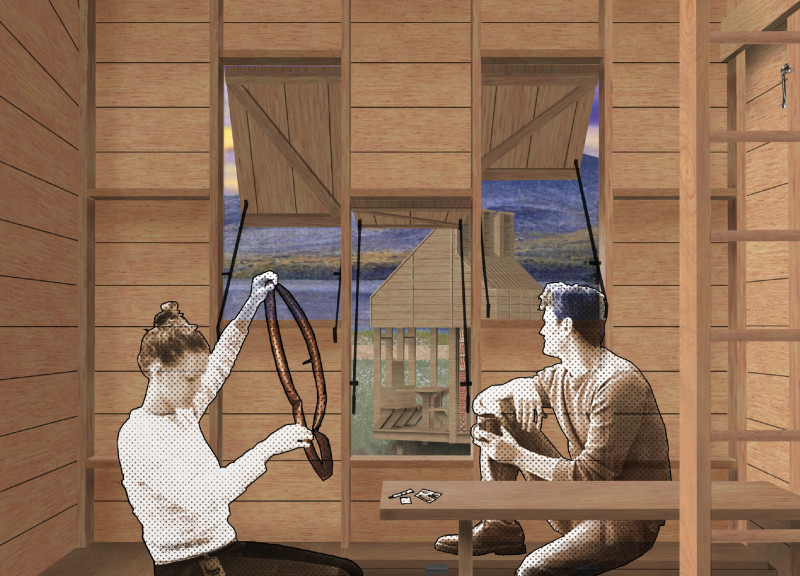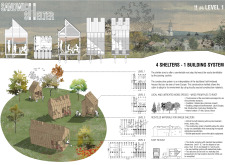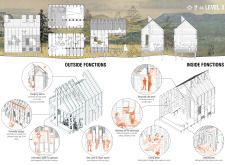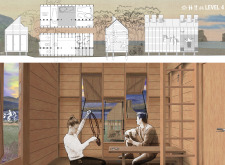5 key facts about this project
The shelters serve as strategic points for cyclists, offering services such as bike repair stations, charging points, and information panels about local attractions. These elements are catered specifically to the cycling community, facilitating both short-term rest and longer durations for those seeking overnight accommodations. By integrating diverse uses into a compact form, the design encourages social interaction among users, promoting a sense of community within the cycling environment.
Innovative Design Approaches
The Sandwich Shelter distinguishes itself from similar projects through its emphasis on local materials and sustainable building practices. Un-treated wood species sourced from the surrounding area, including Robinia, Oak, Chestnut, Douglas Fir, Larch, Scots Pine, Maritime Pine, Fir Tree, and Spruce, create a visually and environmentally cohesive structure. This choice not only minimizes the carbon footprint associated with transportation but also highlights the project’s commitment to eco-friendly architecture.
Design elements such as modular construction and flexible interior layouts allow each shelter to adapt to various settings and user needs. For instance, foldable furniture maximizes space usage, enabling the shelters to cater to both individual cyclists and larger groups. The integration of rainwater storage systems exemplifies an innovative approach to resource management, further enhancing the sustainable character of the design.
Functional and Engaging Features
Architectural features within each shelter are organized to prioritize user experience. Internal spaces are designed to be open and inviting, encouraging a variety of activities from social gatherings to solitary rest. The structures are elevated on pile foundations, which preserve the natural landscape underneath while reducing ecological disruption. The design also includes strategically positioned windows and openings to enhance natural light and ventilation, contributing to a comfortable environment.
Additionally, the project incorporates elements such as solar-powered charging stations and bike repair facilities geared toward self-sufficiency for the cycling community. This focus on utility and accessibility allows the shelters to function as essential hubs within the local cycling infrastructure, promoting longer visits and increased community engagement.
Readers interested in delving deeper into the Sandwich Shelter project are encouraged to explore the architectural plans, sections, and design details presented. An understanding of the project's architectural ideas will provide further insights into its thoughtful execution and innovative approach to sustainable architecture.


























